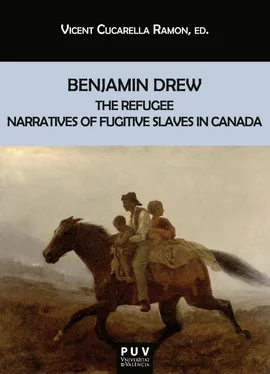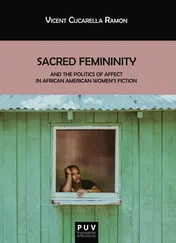Vicent Cucarella Ramón - Benjamin Drew
Здесь есть возможность читать онлайн «Vicent Cucarella Ramón - Benjamin Drew» — ознакомительный отрывок электронной книги совершенно бесплатно, а после прочтения отрывка купить полную версию. В некоторых случаях можно слушать аудио, скачать через торрент в формате fb2 и присутствует краткое содержание. Жанр: unrecognised, на английском языке. Описание произведения, (предисловие) а так же отзывы посетителей доступны на портале библиотеки ЛибКат.
- Название:Benjamin Drew
- Автор:
- Жанр:
- Год:неизвестен
- ISBN:нет данных
- Рейтинг книги:3 / 5. Голосов: 1
-
Избранное:Добавить в избранное
- Отзывы:
-
Ваша оценка:
- 60
- 1
- 2
- 3
- 4
- 5
Benjamin Drew: краткое содержание, описание и аннотация
Предлагаем к чтению аннотацию, описание, краткое содержание или предисловие (зависит от того, что написал сам автор книги «Benjamin Drew»). Если вы не нашли необходимую информацию о книге — напишите в комментариях, мы постараемся отыскать её.
Benjamin Drew — читать онлайн ознакомительный отрывок
Ниже представлен текст книги, разбитый по страницам. Система сохранения места последней прочитанной страницы, позволяет с удобством читать онлайн бесплатно книгу «Benjamin Drew», без необходимости каждый раз заново искать на чём Вы остановились. Поставьте закладку, и сможете в любой момент перейти на страницу, на которой закончили чтение.
Интервал:
Закладка:
All these writings and publications came to fruition because, although by the 1850s Black people in Canada had represented a long-standing presence in the land, all through the 1855s and 1860s there would be evidence of the extent of Black involvement in abolitionism and anti-slavery work in Canada West. Marking the province as a pivotal spot in the anti-slavery struggle, authors and abolitionists attached to Western Canada started to intervene in the anti-slavery arena by means of autobiographical, fictional, or testimonial writing, as Benjamin Drew’s work demonstrates. As Sawallisch asserts
The 1850s saw yet an increase in the popularity – and the necessity – of literature that catered to abolitionism’s goal to appeal to the moral opposition to slavery and the requests of their audience. Black authors like Smallwood, Stewsrd, Ward and Warren demonstrated, however, that they did not depend entirely on the phenomenon of Uncle Tom’s Cabin in 1852 to further fuel the distribution of their narratives. (20)
Hence, this so-called Black Canadian Renaissance in Victorian Canada needs to be considered as a crucial moment in Black Canadian literature and culture since it represents the springboard of an entire abolitionist literature across diverse genres that will be intent on denouncing slavery and discriminatory practices. At the same time, as Drew’s text proves, this set of writings will pit the Canadian and American reality against each other and, in so doing, it will shun the racist practices and unequal treatment that some Black people were suffering in Canada. Besides, by expanding the centrality of Black Canada through the different geographies, the Renaissance broadens the limited understanding of Canadian abolitionism, antislavery activism, and black community building, and also sheds light to multiple literary and biographical cross-border trajectories and stories between Canada West and the United States, like Drew’s collection corroborates.
Re-Visiting “Canaan” (1845-1860): Interventions and Cross-Border Black Communities
The mid-nineteenth century was marked by the opening of more space for new Black settlement. Canada’s reality was rife with diversity, and it witnessed more and more diasporic and imperial circulation that started to configure Black transnational geographies and the ongoing blossom of Canada’s own national and cultural emergence. In this context, the cross-border exchange, and the transnational unity in search of freedom and a more democratic North America became a commonplace that should be supported. Many voices were part of this attempt and all of them worked toward the same direction. The consolidation of Black communities in Canada, and especially in the West, found the aid and interest of transnational abolitionism. It was a way to display the positive ways in which the (already) Black Canadians had absorbed the professed values of freedom and equality in British North America. These Black communities were, then, the living proof that the way out of slavery was not only possible but also favourable for the country. Among the outstanding personalities that are an example of this transnational effort to foster freedom and anti-slavery defense for the benefit of the established Black communities in Canada is Mary Ann Shadd.
Shadd is a remarkable figure in North American history and culture. As a daughter of notable free Black abolitionists, she became “key to reconfiguring the North American mid-nineteenth century from a perspective that includes the Black Canadian Renaissance” and linked “a number of developments and other writers who were crucial to this cross-border transnational context” (Siemerling 99). Her intellectual drive, her social commitment and her abolitionist militancy turned her into a prominent figure in the Black Canadian 1850s context. She soon proved her convinced ideology when she stepped into the world of abolitionism by publishing two documents, a letter to Frederick Douglass printed in the North Star and a pamphlet called Hints to the Colored People of the North . Yet, it is acknowledged that one of the most, if not the most, relevant contributions of Shadd’s was her devoted defense of emigrationism. In fact, her resolution to move to Canada in 1851 indicated her willingness to take decisive action against The Fugitive Slave Act since this law “gave new urgency to the debate about emigrationism” (Siemerling 102). Even though the Garrisonian abolitionist wing was adamant to consider emigration as a feasible way to not only escape slavery but also to reclaim Black personhood – especially after the failure of having considered Sierra Leone or Liberia as possible destinies that could embrace the freedom of fugitive slaves –, emigration to Canada presented different perspectives. More often than not, it became not only an option but, many a time, a necessity after the Fugitive Slave Act. Shadd was a full supporter of this view and considered Canada a site of human rights and inherent Black empowerment that projected a similar potential across the border. In this light, this Black abolitionist “reiterated in 1855 a number of themes that recurred again and again in the debate of the 1850s, including the theme of the dual role of free blacks in Canada as living proof of the possible self-sufficiency and even prosperity of emancipated slaves and as a menacing Sword of Damocles over the United States” (Simerling 104).
Shadd’s thought is, thus, representative of a transnational and cross-border approach to abolitionism and it also represents the seed of Black Canadian experience and identity in (still) British North America. Her ideological agenda is best explained in her preeminent work, the emigrationist manifesto A Plea for Emigration or Notes of Canada West, in its Moral, Social and Political Aspect: With Suggestions Respecting Mexico, West Indies and Vancouver Island, for the Information of Colored Emigrants , which appeared in 1852. Although originally addressed to a Black U.S. audience, the text gained importance because it was published in the same year that the now classic and foundational Roughing It in the Bush, or, Life in Canada by British Colonial pioneer Susanna Moodie. This text has become a milestone to understanding the beginning of Canadian literature and the Canadian experience no longer under the auspices of the British lore.
As Moodie’s initial distaste for the hardships of “roughing it” gradually changed to an eventual earnest commitment to Canada’s future so did Shadd’s guide as it was welcomed by abolitionists and Black Canadian settlements. In fact, Shadd’s text can be considered foundational to (Black) Canadian literature as it bears testimony “of the earlier black narratives bearing on Canada challenge the elision of black experiences and writing in many previous accounts of midnineteenth-century Canadian life and letters” (Siemerling 105). In fact, Shadd’s manifesto “came at the height of the American Renaissance, with its simultaneous celebration and questioning of the United States” (Siemerling 105) which, together with her reflections on Black emancipation and her transnational approach makes it an outstanding contribution to African American culture and identity.
Moreover, A Plea for Emigration or Notes of Canada West represents Shadd’s tour de force in her defense of emigration against the Garrisonian abolitionists. This new approach to abolitionism became well received in Canada since fugitive slaves found it easier to get her voice heard and taken into account. This is why her work elicited a positive response and served as an inspiration for other abolitionists, like Benjamin Drew himself, who equally thought that migrating to Canada represented a valuable escape in search of freedom. Besides, Shadd’s antislavery plea became crucial to spread “another” type of Canadian nineteenthcentury enclosed in the aforesaid Black Canadian Renaissance. It also acted as a way to breathe flesh and visualize the accepted repression of the other that was so well represented the American Renaissance. In this sense, Shadd’s contribution is worth praising because it confronted noted Garrisonian abolitionists such as Frederick Douglass or Martin Delany, who were utterly suspicious over her emigrationist stance. Her decisive defense of transnational approach to abolitionism, which would soon enlighten other abolitionists like Drew to follow suit, explains why her name is a celebrated among the Black personalities that planted the seeds of Black Canadian identity. Moreover, as Siemerling accurately summarises, Shadd figures prominently in U.S./Canadian studies as one of the notable Black authors who “wrote and worked in a Canadian context for such an extension of democracy and citizenship in all of North America, since their labors are equally part of Canadian history, however, the trans-border and black Atlantic lives of many of these leading nineteenth-century black intellectuals also underline my claim that the bases of Canadian literary history are in need of revision” (107). In a typical cross-border abolitionist writing, Shadd’s optimism overlooks the often racist reality she had surely experienced after a few months in Canada and rather opts to focus on the Canaan myth of benevolence as a feasible and pragmatic way to impress an ideal on potential Black immigrants that is theoretically possible under Canadian legislation. This is the same optimism as well as omissions, grounded in religious terms that will be found in Drew’s collection.
Читать дальшеИнтервал:
Закладка:
Похожие книги на «Benjamin Drew»
Представляем Вашему вниманию похожие книги на «Benjamin Drew» списком для выбора. Мы отобрали схожую по названию и смыслу литературу в надежде предоставить читателям больше вариантов отыскать новые, интересные, ещё непрочитанные произведения.
Обсуждение, отзывы о книге «Benjamin Drew» и просто собственные мнения читателей. Оставьте ваши комментарии, напишите, что Вы думаете о произведении, его смысле или главных героях. Укажите что конкретно понравилось, а что нет, и почему Вы так считаете.











![Benjamin Franklin - Memoirs of Benjamin Franklin; Written by Himself. [Vol. 2 of 2]](/books/747975/benjamin-franklin-memoirs-of-benjamin-franklin-wr-thumb.webp)
![Benjamin Franklin - Memoirs of Benjamin Franklin; Written by Himself. [Vol. 1 of 2]](/books/748053/benjamin-franklin-memoirs-of-benjamin-franklin-wr-thumb.webp)